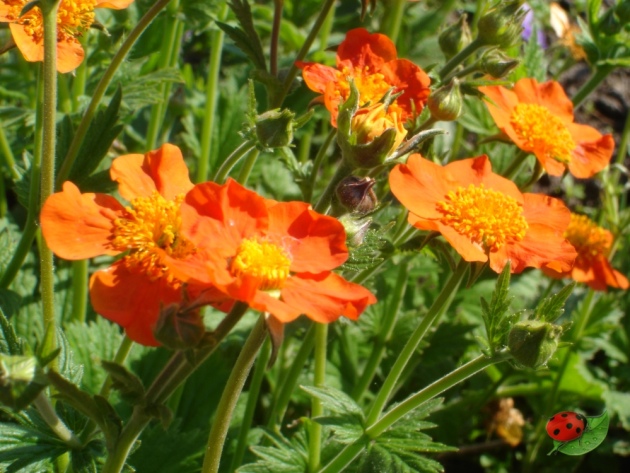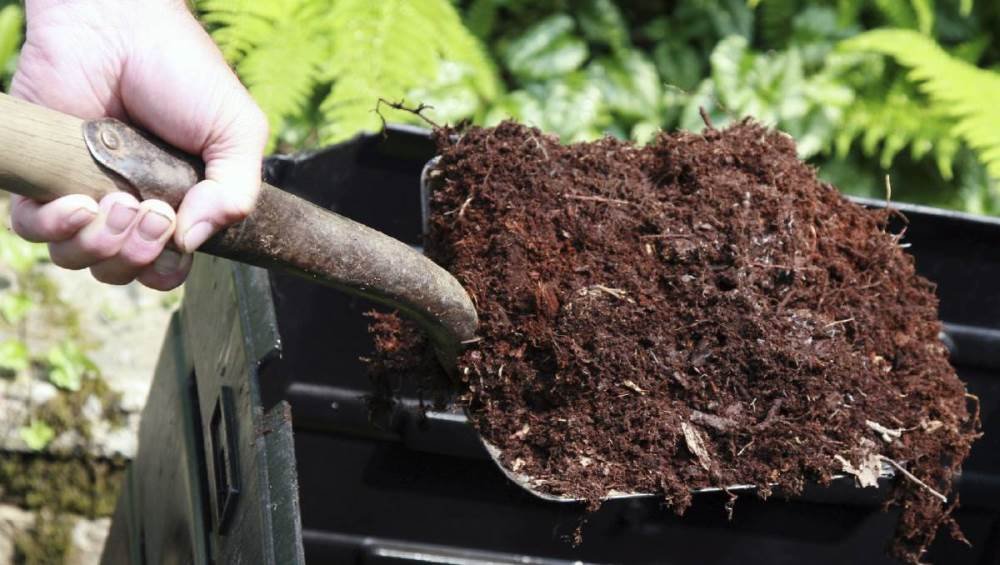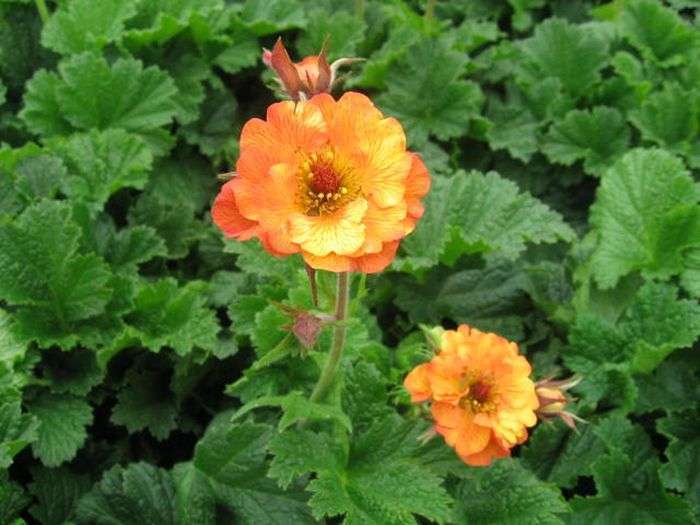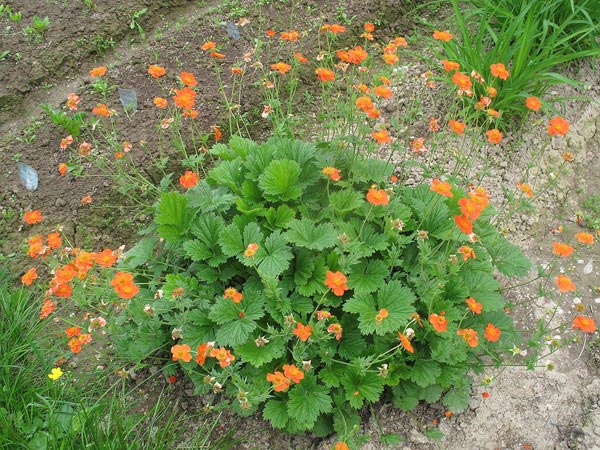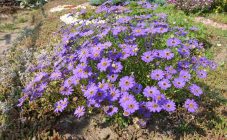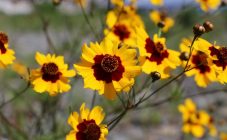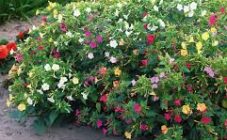Content:
Most gardeners and summer residents strive to pick up perennial plants for cultivation in flower beds and flower beds, which would be characterized by adaptability to cultivation conditions, unpretentious care and beautiful lush flowering. All these requirements are fully satisfied by the Chilean gravilat, another name is "Greek rose". This explains the popularity of this culture in landscape and ornamental gardening. In order for the plant to reveal these properties, it is necessary to know all the subtleties of planting gravilat and care in the open field.
Brief description, main varieties
Chilean gravilat is a perennial plant species from the Rose family. Presented by beautiful herbaceous plants. According to the editorial description, the plant is native to Chile and is cultivated throughout the cultural environment in many countries. On average, it reaches an average of 60 cm in height, which makes it one of the tallest representatives of the Gravilat family. The foliage is pinnate, located in the root rosette. The flowers are red or yellow in color, reaching up to 3 cm in diameter. They are arranged in large paniculate inflorescences. Most varieties begin to bloom in the last decade of June and continue to bloom for a month and a half. There are varieties that can bloom from May to early autumn.
The plant is widely used in breeding for targeted crosses. This resulted in the development of several varieties, the most famous of which are the following:
- Aurelia. The variety has yellow double flowers up to 5 cm in diameter. The bush grows to a height of 50-60 cm. Flowering begins in May and lasts until the twenties of June. In addition to decorativeness, it is valued in folk medicine. Unprotected, requires additional powder or cover for the winter.
- Mrs. Bradshaw. Plants have poly-double flowers of scarlet color, the diameter of which is 4 cm. The height of the bushes reaches 50-60 cm. Flowering lasts from June to mid-July - early August. In winter, the plantings are sprinkled with foliage.
- Red Dragon (Fireball). The plants have bright red double flowers, the diameter of which reaches 4 cm. Inflorescences are a panicle, typical for the culture as a whole. Blooms in May-July. One of the most resistant to unfavorable factors of the winter period varieties of Chilean gravilata.
- Lady Strafden Gravilath. It is characterized by deep yellow double flowers, reaching up to 3-4 cm in diameter. Flowering begins in the last decade of June and lasts until the tenths of August. The variety is relatively winter hardy, therefore it can endure winter without additional shelter.
- Moon Valley. This variety has golden-yellow semi-double or double flowers 3-4 cm in diameter. Plants grow up to 60 cm in height. Flowering of this perennial begins in May and lasts until July. The variety is winter-hardy, but in the northern regions with harsh winters, it is better to shelter it.
- Rigoletto. Gravilat has double inflorescences up to 4 cm in diameter.The variety has straight stems, and the foliage is arranged in a bunch. Peduncles are beautiful, bright. Growing Rigoletto gravilata from seeds is considered the main method of its reproduction.
Gravilat: planting and leaving
Seat selection
To grow Chilean gravilata, it is necessary to select a site that would be sufficiently well lit. The plant will be able to survive normally on a shaded plot, but its growth in such conditions will significantly slow down.
Gravilat requires non-oxidized soils. If the soil is excessively waterlogged, then before sowing, it is necessary to reduce the moisture content in it by adding a certain amount of soil and slightly raising the flower bed. The land must be pre-fed with the following substances:
- coarse sand;
- charcoal;
- deciduous soil.
Landing
Plant seeds are usually sown in spring. Although Chilean gravilat is considered an unpretentious crop, it is required to loosen the soil before sowing it, and also compost or peat into it. If for cultivation of the plant there is only soil with an increased level of acidity, it must be lowered with dolomite flour. It is necessary to maintain a distance of at least 20 cm between the bushes.
When planting plants, the best option is to use low oblong ridges. They are best suited for trail decoration. Mixborders are also a good solution, which are designed to put together plants that are constantly blooming. Plants can be used to grow carpet lawns. Such plots are most often located in shaded conditions, and therefore the gravilat will bloom much less often, but it will form a pleasant greenery of a rich color.
Irrigation
Gravilat is distinguished by its relative drought resistance and is able to calmly endure for some time without watering, however, its cultivation is impossible at all without adding moisture. Regular and abundant watering is especially important during dry summer periods. Irrigation can restore plants even if they have already suffered from severe drought.
Fertilizers
The best option for feeding for gravilates is mineral preparations. Nitroammofoska, a granular fertilizer containing nitrogen, potassium and phosphorus, should be their obligatory components.
Soil care
The soil on which the gravilat grows requires periodic loosening with the simultaneous removal of weeds. It is recommended to combine this procedure with irrigation, since this way the root system is faster and better saturated with air and moisture. If the soil is excessively waterlogged, the plants need to be raised by adding earth or transplanted to another place.
In some cases, gravilats may need pruning. With its help, it is possible to get rid of old faded inflorescences, to rejuvenate the bush, giving it a certain shape. As a result of properly carried out pruning, new shoots begin to form, and the flowering becomes more lush, bright and saturated.
Plant propagation
Wild gravilata are usually propagated by seed. Seed material needs preparation, which consists in preliminary stratification and seed soaking. These procedures can significantly increase seed germination. They are placed in wooden boxes with a nutrient substrate and buried approximately 2-2.5 cm. The seedlings are covered with plastic wrap on top, which protects them from frost.Seedlings require moderate watering. When the seedlings form three leaves each, they are moved to the garden bed for further continuous cultivation.
The division of the bush is usually done in the spring. It is not recommended to hold this event more than four times a year. The daughter rosettes, on which the particles of the root system are located, are carefully separated from the mother plant. Immediately after this, the cuttings are transplanted to a permanent place and watered abundantly.
Protection before wintering
Chilean gravilat has sufficient winter hardiness, and in some varieties this trait is even more pronounced. Nevertheless, in our conditions, it is recommended to cover the plantations with spruce branches for the winter. As an alternative to this tool, it is allowed to use dry foliage, which is laid out on the site with a dense carpet. Cloth materials used for wrapping plants can not be used - the gravilat under them will freeze anyway.
Diseases and pests
Before planting a plant, it is recommended to disinfect the soil, destroying pathogens of fungal diseases. For this purpose, special fungicides are used. During the growing season, plants are rarely affected by diseases, however, in the case of strong moisture, root rot may develop. Affected plants are dug up and taken away from the site along with an earthen clod. Healthy specimens are treated with fungicides.
Lack of water provokes the appearance of a spider mite. Appropriate acaricides are used against this pest. In the future, the plantings should be provided with a normal level of irrigation.
Use in landscape design
In mixed and group ornamental plantings, the flowers in question look especially advantageous. Gravilat red is suitable for use in the composition:
- alpine slides;
- flower beds;
- rockeries;
- mixborders;
- discount, etc.
With the correct selection of varieties, you can achieve constant flowering of the plant from May to September inclusive. Thanks to this, it is possible to avoid ugly looking empty distances in the plot.
Chilean gravilat can be used in single plantings. In this case, the plant looks beautiful on alleys, borders, flower beds. Flowers are ideal for cutting and adding to bouquet arrangements. The rich yellow and red color of gravilates allows them to combine quite well with the following plants:
- bells;
- phlox;
- carnations, etc.
The care and cultivation of Chilean gravilat is not too difficult a procedure and is within the power of most summer residents and gardeners. At minimal cost, it is possible to achieve a bright and long-lasting flowering of plants in various types of ornamental plantings.
